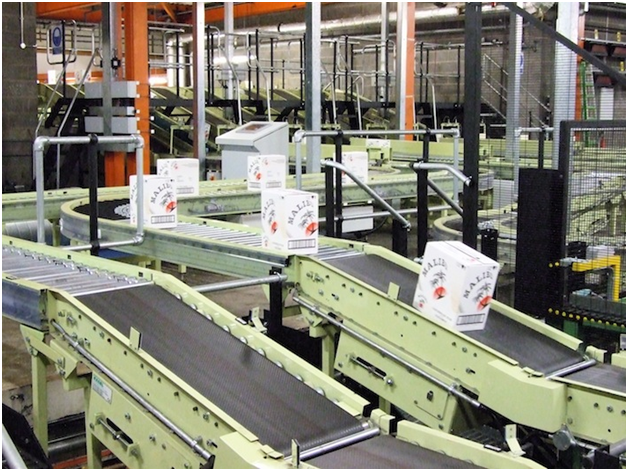We see conveyors everywhere – moving our luggage when we go on holiday, pulling groceries along at the supermarket checkout, moving post through the sorting office, or allowing us to walk quickly on travellators in large public spaces. This is quite apart from their incredibly wide use in manufacturing, industry, pharmaceuticals, food production and various other kinds of processing.

Industrial conveyors have to deal with heavy workloads and operate at various angles and in different directions. They may also need to keep moving whatever the weather, even if they are located outside. By fulfilling all these requirements, they bring significant benefits to businesses in terms of efficiency.
Moving easily through different levels
One of the great benefits of conveyors is that heavy items, or a high number of items, can easily be moved from one floor of a plant to another, or from a low-level processing unit to one operating at a greater height. The manual alternative would be loading and unloading goods lifts.

Items can be loaded and unloaded continuously in an automatic process. The fact that the conveyor can traverse building floors easily means that the process designer can look at the building as one space and design the process to be as efficient as possible, without having to worry about each floor being a limited discrete space.
Control over the rate of movement
As the operators have control over the rate at which items are moved around, there is far less chance of items falling off the conveyor. This also makes the process safer for the operators. Similarly, if items need to be picked up, processed and then replaced on the conveyor, the speed can be carefully judged so that operators can work quickly and evenly without being overwhelmed.
Developments in conveyor technology
The growing sophistication of vacuum conveying technology from experts such as http://www.aptech.uk.com/pneumatic-conveying-systems/vacuum-conveying/ has led to greater use of conveyors to move materials around factories as part of complex processes involving many different steps and ingredients.
Another recent conveyor development, as reported by equipment and technology magazine Processing, is the motorised drum. The gear unit, bearings and electric motor make up a complete drive within the pulley’s drum shell, which protects the motor from damage.
We all need the conveyor – it is the unsung hero of our commercial and manufacturing world.



